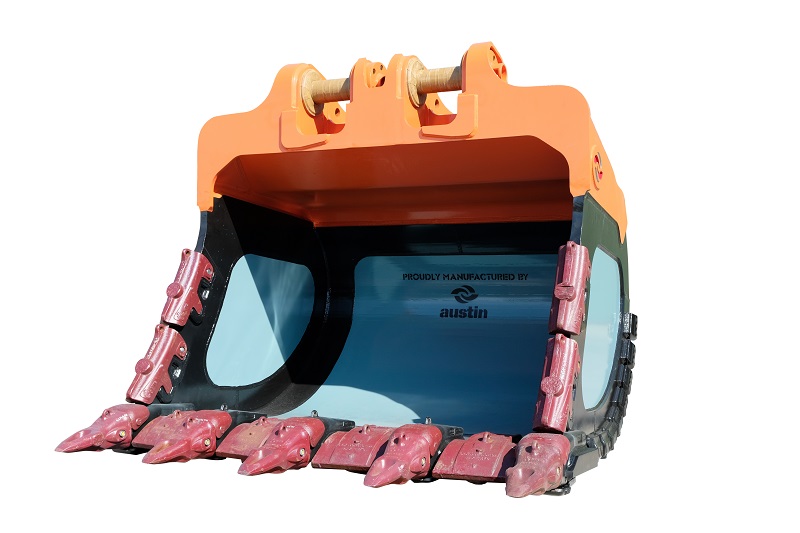Austin Engineering has designed and manufactured a new two-piece excavator bucket that, it says, can both improve safety and service life.
The bucket assembly features well-defined reusable upper and consumable lower structures, designed for quick and safe bucket change-outs during scheduled maintenance intervals, the company said.
The bucket has been structurally verified for the nominated fatigue life using both ANSYS FEA software and EDEM simulation, according to Austin. This showed the new bucket assembly will achieve the theoretical target payload at the nominated fill factor. Meanwhile, the upper and lower sections of the new bucket are fabricated with combinations of high-strength steel for maximum fatigue resistance and durability, Austin said.
“The design is focused on safety with extensive consideration given to the potential for ‘stored energy’ safety hazards to exist and these have been eliminated from the design wherever practical,” Austin said.
The reusable upper section maintains overall structural integrity of the bucket assembly for a predetermined service life through multiple change-outs of the lower, consumable, section, according to the company.
The typical baseline service life for the upper section service will be in the vicinity of 30,000 hours; around four-to-five years based on industry expectations of conventional one-piece buckets of similar size and capacities, Austin said.
“Designed to be mine site and application-specific, the upper section offers scope for customisation and benefits proportionate to minimising costs over the assembly’s operational life,” the company said.
The bucket is available as fully-lined or liner-less, while the consumable lower section features a simplified design to improve the change-out time of a complete lower section or the removal and replacement of worn individual components.
For fully liner-less, lower bucket assemblies, the resulting structure uses alternative high strength and wear resistant materials in key areas along with increased thickness of identified structural components, according to Austin.
“Components subject to high wear and impact, such as the main shell and side plates, are designed as modular inserts which can be customised to customer specific operations,” Austin said, adding that these can be easily removed and replaced if required ahead of planned change-out.
Replaced lower sections provide an option for remanufacturing and can be returned to site for storage and direct replacement as required.











